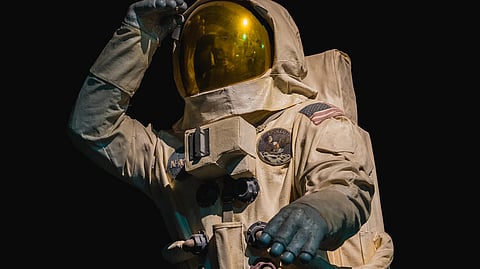
- Home
- न्यूजग्राम
- NewsGram USA
- India
- World
- Politics
- Entertainment
- Culture
- Lifestyle
- Economy
- Sports
- Sp. Coverage
- Misc.
- NewsGram Exclusive
- Jobs / Internships

As per ESA, the human body's internal rhythm or circadian rhythm is described "as the physical, mental and behavioural changes our bodies undergo over a period of about 24 hours. Our internal clock is linked to the body's core temperature, which varies throughout the day, and triggers our metabolism and sleep cycle".
Light exposure is a major factor influencing our rhythm as humans tend to wake up during the day and sleep at night. This is particularly significant in the context that the astronauts on the ISS do a full circle of the Earth every 90 minutes and experience 16 sunsets and sunrises every day.
With this unearthly routine, astronauts can struggle to find a natural daily rhythm in space.
To better understand, SAGA Space Architects from Copenhagen, Denmark, created a lamp designed to support the circadian rhythm of astronauts in space. The lamp, installed by Mogensen inside his crew cabin, was previously tested on a two-month expedition to Greenland, and showed that the light was important to keep a regular schedule and help orient them in
time.
The lamp is synchronised to Mogensen's sleep schedule and changes lighting throughout the day. In the evening, when Mogensen goes to sleep, the light will glow in red to simulate a calming sunset.
In the morning, when he wakes up, the light will turn blue, evoking the colours of a morning sky. The colours of the light have been carefully selected to mimic the natural light of day, which astronauts do not experience while on the ISS, the ESA said.
Another experiment by researchers from Aarhus University, Denmark will measure Mogensen’s electroencephalogram (EEG) of the brain.
Similar to in-ear headphones, the small in-ear measuring device that Mogensen will wear while sleeping will allow researchers to analyse his brain activity throughout the night to help understand the quality of his sleep.
Many astronauts have difficulty adjusting to sleeping in space. Instead of lying down, astronauts float in a sleeping bag strapped to the wall of their sleeping quarters.
The usual way of measuring EEG is with a helmet-style measurement device, which can often be discomforting due to the size and many wires. The in-ear devices are less invasive and easier to put in before going to bed.
